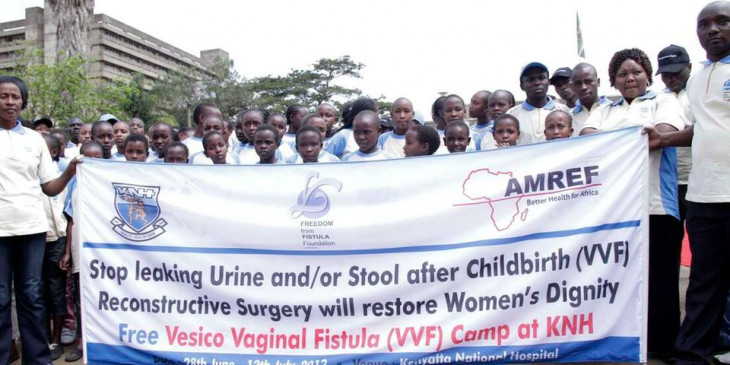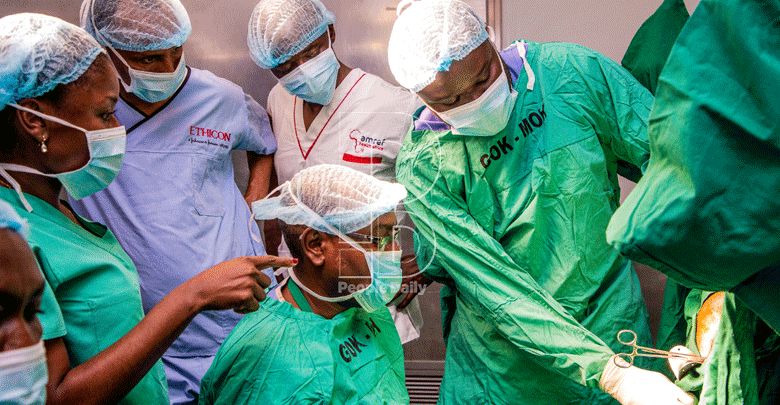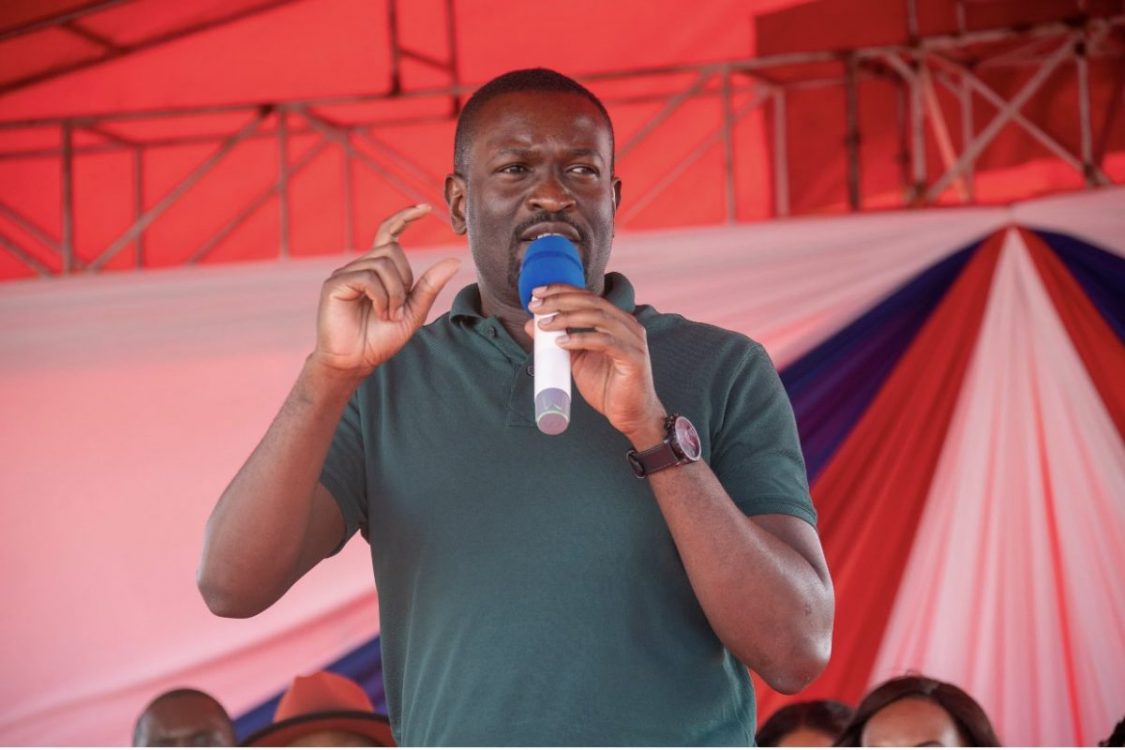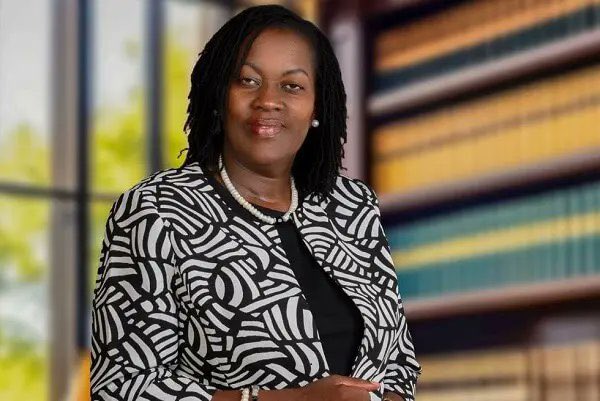Road to tackle obstetric fistula long, two decades on

Rhoda Cherono a resident of Eldoret, Uasin Gishu County was married off at 15 years old, and at 18, she got pregnant.
In a sad turn of events arising from a prolonged, obstructed and agonising labour, Rhoda lost her baby and as she was coming to terms with this, she discovered that she had developed obstetric fistula.
“My delivery was difficult. I was in labour for two days at home, under the care of a traditional birth attendant. I was eventually taken to a local hospital, where I delivered, but my child did not survive,” she recounts.
The childbirth injury left her leaking urine and stool, which led to her family members isolating her. “Everybody in our neighbourhood including my own family called me a witch,” she painfully recalls.
It took her several years to understand what was happening to her body and a few more to get help.
During this period, a lot changed. She could no longer continue with her daily activities as usual. She says because of the shame and stigma associated with the disease; she missed out on many social occasions in their village.
Sadly, Rhoda’s, to varying degrees, is the story of many other women across the country who are living in pain and shame due to obstetric fistula. However, most women who get the injury do not know that it is both preventable and treatable.
Poor and marginalised women
Rhoda caught her lucky break when a team of fistula specialists at Gynocare Women’s and Fistula Hospital, a fully dedicated hospital to treatment of obstetric fistula identified her problem.
According to statistics, more than half of women suffering from obstetric fistula don’t receive help for their disorders. The current capacity for fistula surgical repair services in Kenya is less than 1,000 patients every year or less than 50 per cent of the estimated annual incidence, an indication that Kenya is in dire need of medical personnel trained in management of female genital fistulae, including prevention, repair and reintegration back into the society.
Data from the Ministry of Health shows that more than 3,000 new cases of female genital fistula are recorded in Kenya every year, and only 7.5 per cent of the women are able to access medical care. Obstetric fistula occurs mostly among the poorest and most marginalised women and girls, especially those living far from medical services and those for whom services are not accessible, affordable, or acceptable. This was the case for 27-year-old Agnes Njeri. “I gave birth to my son at home with no one to help because I had no money to travel to hospital. The labour was difficult and I began leaking faeces shortly after, which left me unable to continue with my work or interact with people as I used to,” she narrates.
Difficulty accessing care
Coming from the interior parts of Murang’a County, clients at her hairdressing salon complained about her smell, and many quickly abandoned her services. This forced Agnes to close down her business, leaving her with no source of income. “For about two years, I tried to seek advice from close friends so I could go back to living a normal life, I then sought the help of a clinic nearby, but the cost was too high for my partner and I,” she narrates.
“Most cases of obstetric fistula can be treated through surgery, after which women and girls can be reintegrated into their communities, says Isaac Wasike an obstetric gynecologist.
He says women living with fistula, however, face barriers in accessing care, including a lack of adequate healthcare facilities and professionals with the necessary skills and essential equipment needed to provide fistula surgery. Where services are available, many women, such as Agnes are not aware of them or cannot afford to access them.
Often, many avoid or delay seeking treatment due to concerns about being treated differently. That’s because stigma, prejudice and discrimination against people with obstetric fistula is still a huge concern.
Although obstetric f istula may not be as widely recognised as other maternal health issues, the Fistula Foundation estimates that over two to three million women and girls in developing countries, such as Kenya suffer from this condition today.
In particular, most of the two million-plus women in developing nations who suffer from obstetric fistula are under the age of 30.
The World Health Organisation (WHO) has labeled it as “the single most dramatic aftermath of neglected childbirth.
Fistula is a devastating condition often resulting from obstructed labour that can cause infections, incontinence, and even paralysis. The condition largely afflicts poor, rural, and illiterate women in counties who lack resources and access to emergency care and surgery, and sufferers often face an additional burden of social stigma.
It could also be described as a severe medical condition in which a fistula (hole) develops between either the rectum or vagina (recto-vaginal fistula) or between the bladder and vagina (vesico-vaginal fistula) after severe or failed childbirth, due to the unavailability of adequate medical care.
According to medical experts, other potential direct causes for the development of obstetric fistula are sexual abuse and rape, especially within conflict or post-conflict areas, other surgical trauma, gynecological cancers or other related radiotherapy treatment and, perhaps the most important, limited or no access to obstetrical care or emergency services.
The Covid-19 pandemic and the resulting lockdowns heightened the plight of fistula patients who often face barriers in accessing treatment. “Many outreach programmes that offer support to fistula patients were halted during the pandemic. Travel restrictions and the fear of contracting Covid-19 at the hospital also led to more home births, which ultimately increased the incidences of maternal morbidities such as fistula,” says fistula surgeon, Dr Anthony Wanjala.
This has increased the backlog of those living with untreated fistula in the country. “Many women and girls with fistula endure lives of shame, misery, violence, and poverty,” said Dr Hillary Mabeya, an Obstetrician, Gynaecologist, Expert Fistula Surgeon and Director of Gynocare Women’s and Fistula Hospital. He pointed the dire situation that fistula patients live in, saying rather than receiving assistance from their families and communities, they are often ostracized, and in many instances, exiled from their communities. “This is, especially true in developing countries where the role of women is merely limited to providing sexual satisfaction for their husbands, and giving birth,” he shared.
Dr Mabeya said women living with fistula are typically between 15 and 30 years old, illiterate, poor and unaware that treatment is available. If they are aware of treatment options, they often cannot afford it. “Fistula cases can be treated through urethral catheterisation if identified early enough. The Foley catheter is recommended, because it has a balloon to hold it in place. The indwelling Foley catheter drains urine from the bladder. This decompresses the bladder wall so that the wounded edges come together and stays together, giving it a greater chance of closing naturally, at least in the smaller fistulae,” explained the expert. “We offer free treatment and surgery to fistula patients. We are also offering subsidised services to many other patients who do not fall in fistula category, but still require financial support,” Dr Mabeya said.
Renewed hopes and dreams
In 2003, the United Nations Population Fund (UNFPA) and its partners launched the first-ever global Campaign to end Fistula. Its overall goal is to make the condition rare.
This includes interventions to prevent fistula from occurring, treat affected women, renew the hopes and dreams of those who suffer from the condition. This, includes bringing it to the attention of policymakers and communities, thereby reducing the stigma associated with it, and helping women who have undergone treatment return to full and productive lives.










